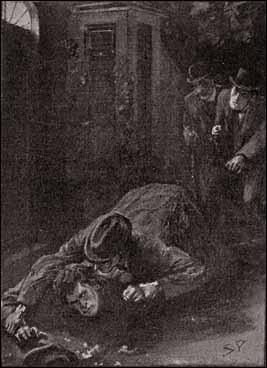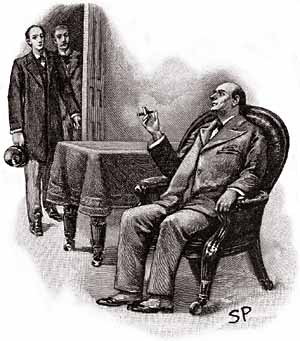If there is anything that can be considered a fault in the original Sherlock Holmes canon, it would probably be the finiteness of it. After four novels and fifty-six short stories, the original tales end. And although readers may turn to them again and again (and again and again and again), the endings never change, the villains are always the same, and the twists are somehow a little less revelatory than before. Readers can analyze and examine and scrutinize each story for new details and new methods of orientation, and those details can be revealing and brilliantly new in their own right. But “the song remains the same,” as the saying goes.
And this is why so many Sherlock Holmes devotees turn to pastiches—to fill the gap that the longing for a new, as yet unsolved, mystery leaves. A list available online numbers the current Sherlockian pastiches at nearly 9,000 separate volumes, and it’s probably not too much of a stretch to imagine that new stories are being added to that number every day. There are a myriad number of ways to categorize these stories. Some books try to capture the original and authentic voice of Dr. John Watson and Sir Arthur Conan Doyle. Some try to imagine the Great Detective’s early life, and the back-story that was not revealed in the original canon. Some pit Holmes and Watson up against forces beyond rational understanding. And some stories even place Sir Arthur Conan Doyle in the position of his most famous creation.
Whatever your preference, and however you may personally define a successful pastiche, there is certainly no shortage of options from which a reader can choose. So in that spirit, over the next month I’ll be hosting a new blog contest, and all you have to do to win is share a little bit about your ideal Sherlock Holmes pastiche. Here are the details:
THE PRIZE PACKAGE:
A new, paperback copy of The Italian Secretary, by Caleb Carr. In a fine example of a traditional-style pastiche, Carr excellently captures Sir Arthur Conan Doyle’s voice in a mystery that pits Holmes and Watson, yet again, against a seemingly paranormal force. When the Detective and Doctor are summoned by the British government (in the personage of Mycroft Holmes) to Edinburgh, Scotland, they set about investigating the strange deaths of two men working on renovating the Royal Palace of Holyrood, but find themselves possibly up against the centuries-old spirits of Mary, Queen of Scots, and her slain music teacher. Caleb Carr is also the author of The Alienist and The Angel of Darkness, featuring turn-of-the-century psychologist, Dr. Laszlo Kreizler.
A new, hardcover edition of The Shadow of Reichenbach Falls, by John R. King. The young ghosthunter, Thomas Carnacki, and his companion, Anna Schmidt, are picnicking beneath Reichenbach Falls when they witness a conflict between two men, and watch one man fall, apparently, to his death. But it is only when they pull the now-amnesiac man out of the water, that they realize the man they call “Harold Silence” (the name of the tailor in the man’s shirt label) may be more extraordinary than appearances reveal. Read my review of the novel here. The author is also known as fantasy novelist J. Robert King, and more information about his publications is available here.
A new, hardcover edition of The Sherlockian, by Graham Moore. Written as a dual narrative, Moore’s debut novel features both a nineteenth century and twenty-first century plotline. In the 21st century, Baker Street Irregular Harold White investigates the suspicious death of fellow Sherlockian Alex Cale and the theft of a rare Arthur Conan Doyle diary. In the 19th century, Doyle—along with companion Bram Stoker—is living out the events that are featured in that diary, which are also the months leading up to Doyle’s decision to resurrect Sherlock Holmes in The Hound of the Baskervilles. You can read my review of the novel here, or learn more on Graham Moore’s website.
HOW TO WIN:
If you were to write your own Sherlock Holmes pastiche, what would you call it? What would it be about? Provide the title of that hypothetical story and a one sentence description of the plot. Feel free to be witty and clever (who doesn’t appreciate a good pun?), thoughtful and precise (share a bit of the novel you plan to write one day), or anywhere in between. Leave the entry providing your title and description in the comments below. Entries can also be submitted via e-mail at betterholmesandgardens[at]gmail[dot]com, or by direct message on Twitter. Feel free to enter as many times as you wish, but each entry must be unique.
The contest is open from now until 11:59p.m. EST on Saturday, July 23, 2011. At that time, a random entry will be chosen from the submissions using Random.org. The winner will be announced on Monday, July 25, 2011 via blog post, Twitter, and Facebook.
Best of luck, and have fun!








